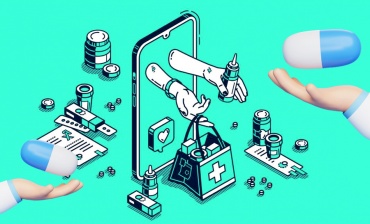The pharmaceutical sector is a highly complex and regulated industry that demands precision and expertise for success. Building a pharmaceutical distribution business, particularly one involved in the distribution, purchase, sale, and export of medicines, requires meticulous planning and strict adherence to both national and international standards. This guide lays out the essential steps for establishing a resilient pharmaceutical distribution company.
Initial Business Structuring: Commence your venture by establishing a solid foundation through proper business registration in your designated operational area. Typically, this involves liaising with local business chambers or relevant authorities to formalize your business entity.
Securing Critical Licenses:
Wholesale Permit: Obtain a wholesale medicine distribution permit from the regional health oversight authority. This permit is the cornerstone of legal pharmaceutical distribution.
International Trade Permissions: For businesses engaged in global trade, securing import and export licenses is paramount. Given the stringent regulations in this industry, adherence to international standards is non-negotiable.
Adherence to Good Distribution Practices (GDP): Acquiring a GDP certification underscores your commitment to quality and adherence to globally recognized distribution standards.
Infrastructure & Specialized Storage Solutions:
Temperature-Regulated Solutions: Medications with specific temperature requirements necessitate specialized cold storage facilities and transportation methods to maintain their efficacy.
Enhanced Security Measures: Controlled substances demand secure environments to prevent unauthorized access, ensuring compliance with regulatory standards.
Expert Personnel Recruitment: Hire professionals with industry-specific training and experience. Designate a “Responsible Person” who can oversee compliance and ensure alignment with global distribution benchmarks.
Regulatory Adherence & Transparent Reporting: Establish state-of-the-art systems to document adverse events and product recalls, prioritizing a proactive approach to pharmacovigilance.
Quality Assurance Paradigms: Incorporate stringent quality assessment protocols, focusing on the safety and efficacy of the distributed drugs. Regular internal reviews and external inspections strengthen these measures.
Nurturing Manufacturer Relations: Forge solid partnerships with legitimate medicine producers, emphasizing transparency throughout the supply chain to combat counterfeit product distribution.
Risk Management & Insurance: Given the inherent risks, secure robust insurance coverage, with a particular focus on liability aspects to safeguard against unexpected drug-related issues.
Embracing Continuous Learning: The pharmaceutical landscape is ever-evolving. Ensure your team stays abreast of new methodologies, regulatory shifts, and industry-specific best practices.
Global Compliance Awareness: For businesses engaged in international operations, be aware of country-specific regulations in the recipient nations. Some countries may impose additional vetting or product validation requirements.
Legal Consultation: Engage legal professionals well-versed in pharmaceutical regulations within your region. Their expertise will expedite licensing processes and ensure compliance.
Conclusion: Building a pharmaceutical distribution company is a complex venture, but with the right strategies, robust infrastructure, and an unwavering commitment to quality and compliance, success is within reach. This guide provides a solid foundation for entrepreneurs looking to navigate the challenges and opportunities in this rewarding industry effectively.
Author: Pooyan Ghamari, Swiss Economist & Visionary






